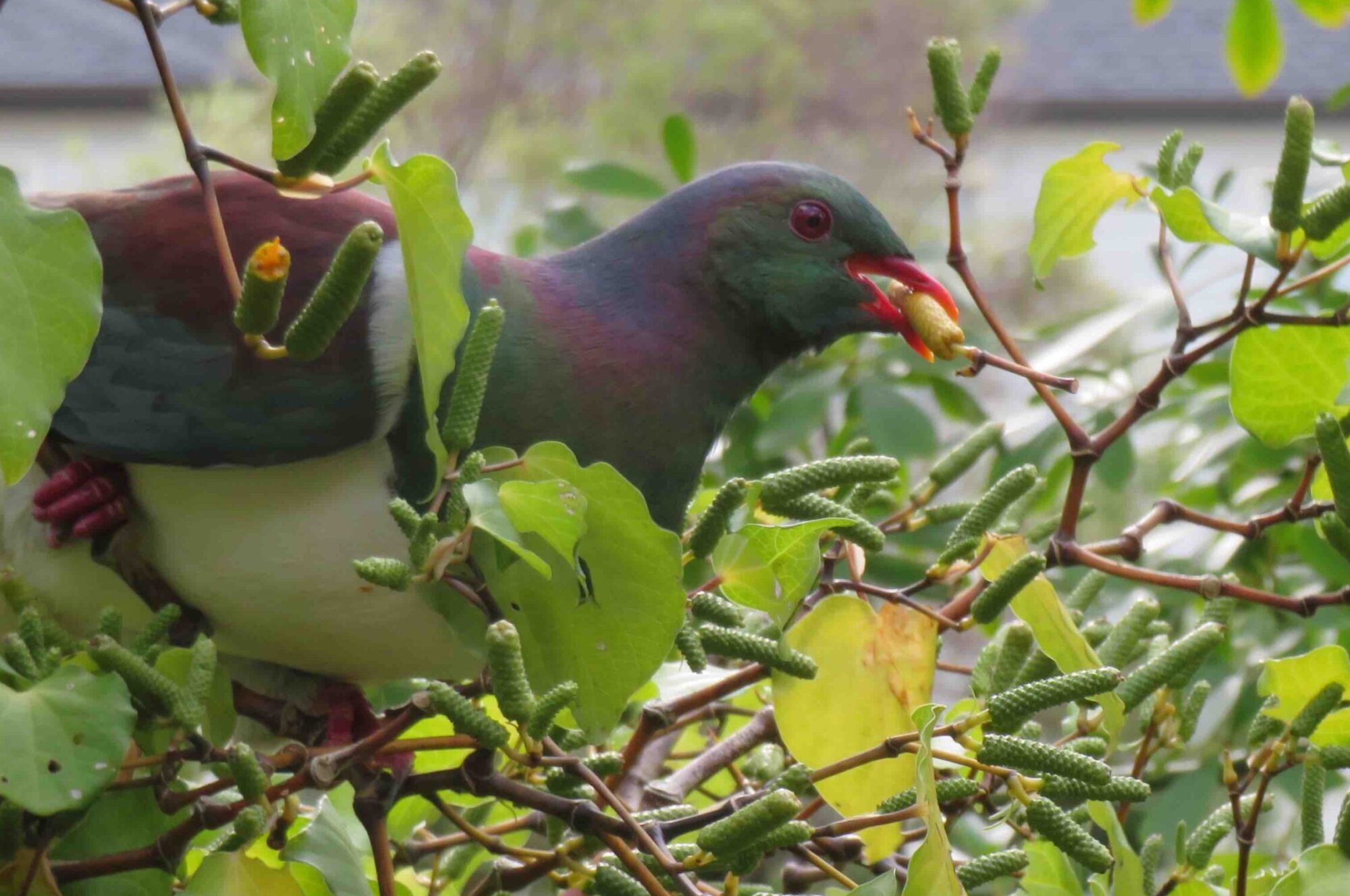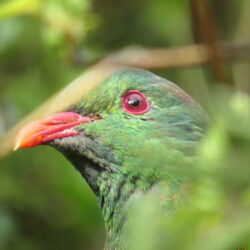Our client Michelle has a large front garden on a slope above a quiet road. Around the edges of this garden there are several large exotic trees, and numerous smaller native trees.
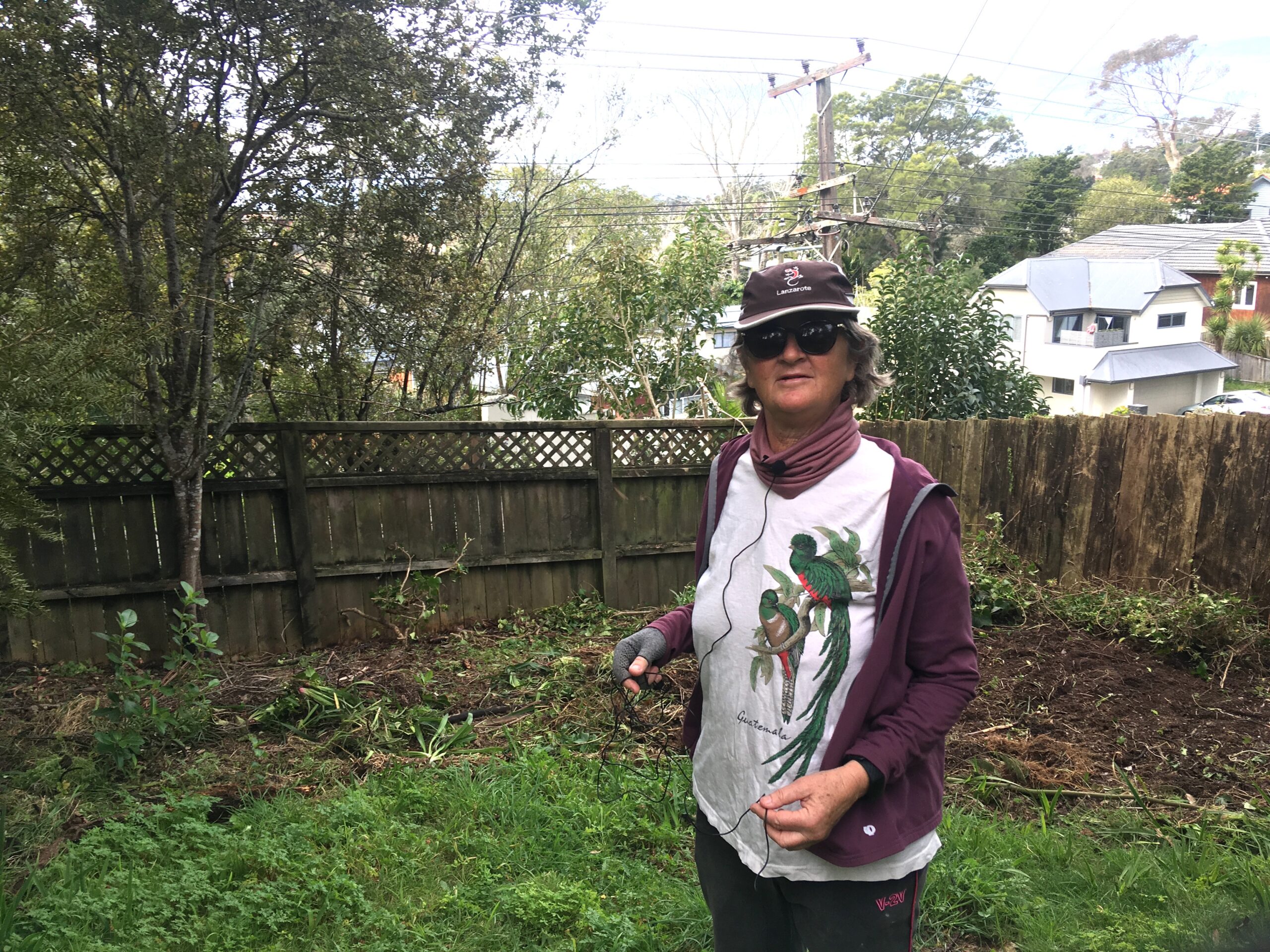
When we started working on this garden transformation, the fences on all three sides were overhung by ivy, which had climbed the fences and the smaller native trees on the other side of the fences, and about 10 metres up a large Norfolk pine. There was also some honeysuckle growing through and under the fence, with some remaining beyond our reach on the steeply sloping roadside berm.
Michelle loves walking in the local bush, and dreamed of enjoying some of that ambience in her own large garden. Once she learned it was possible, she became keen to create a shady little bush-walk by converting the lawn and weedy borders of an unused part of her own large garden to a mostly-wild native plant community, solely by weeding, protecting the weeded ground from trampling and desiccation, and nurturing the wild native seedlings that would arise.
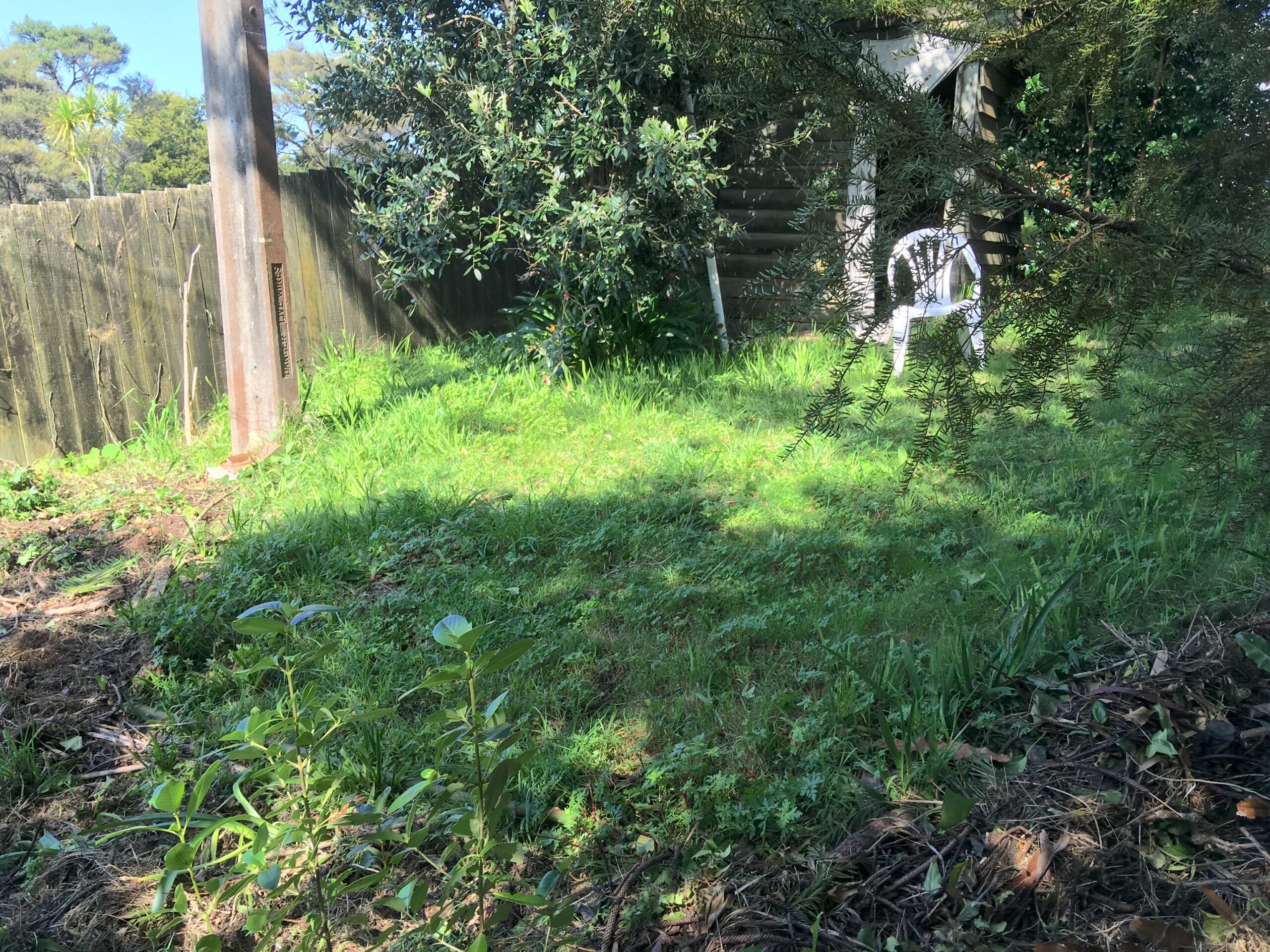
We set about cutting and uprooting as much as possible of the ivy,
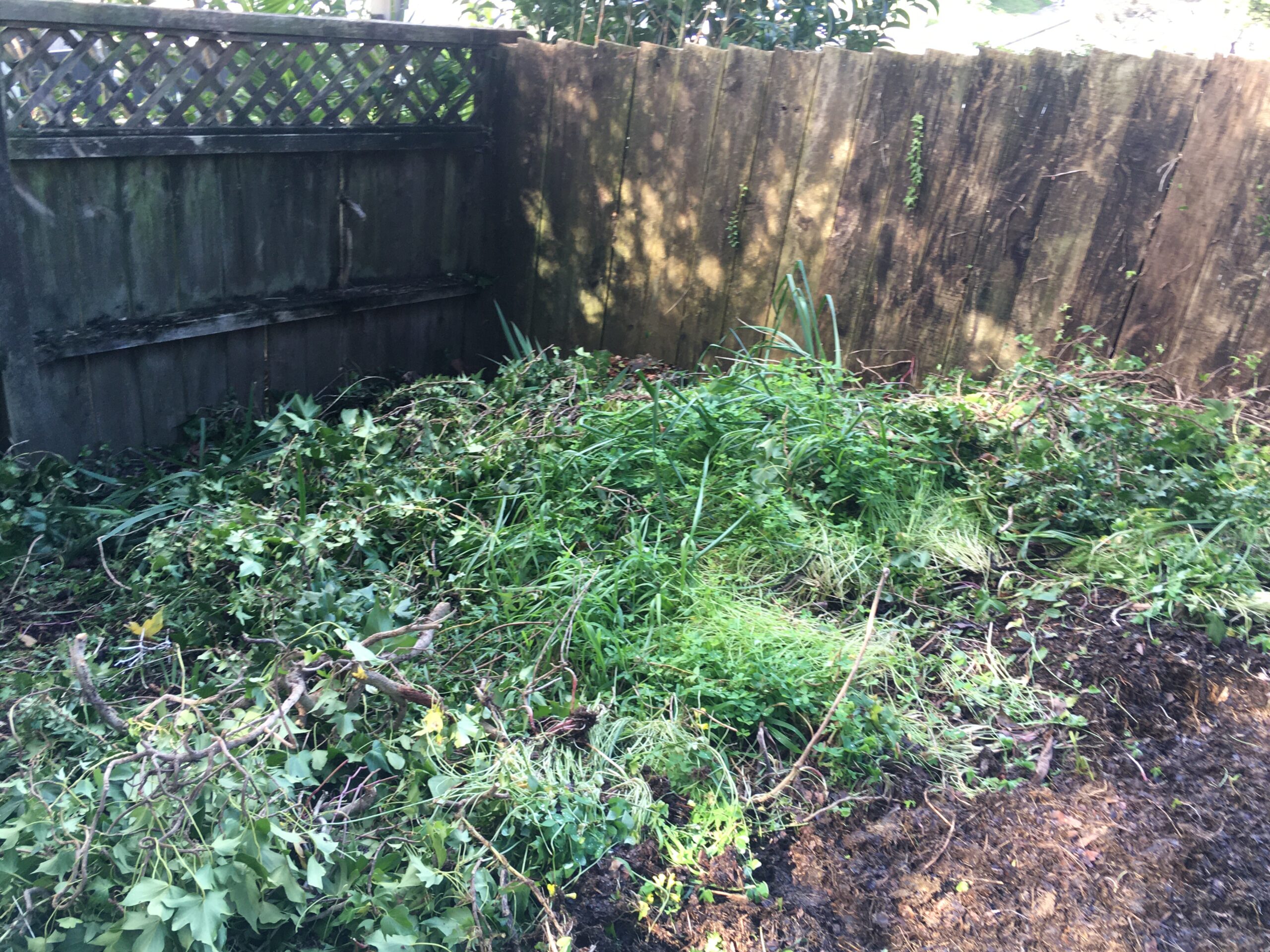
and cut, uprooted or suppressed the major weeds around the edges.
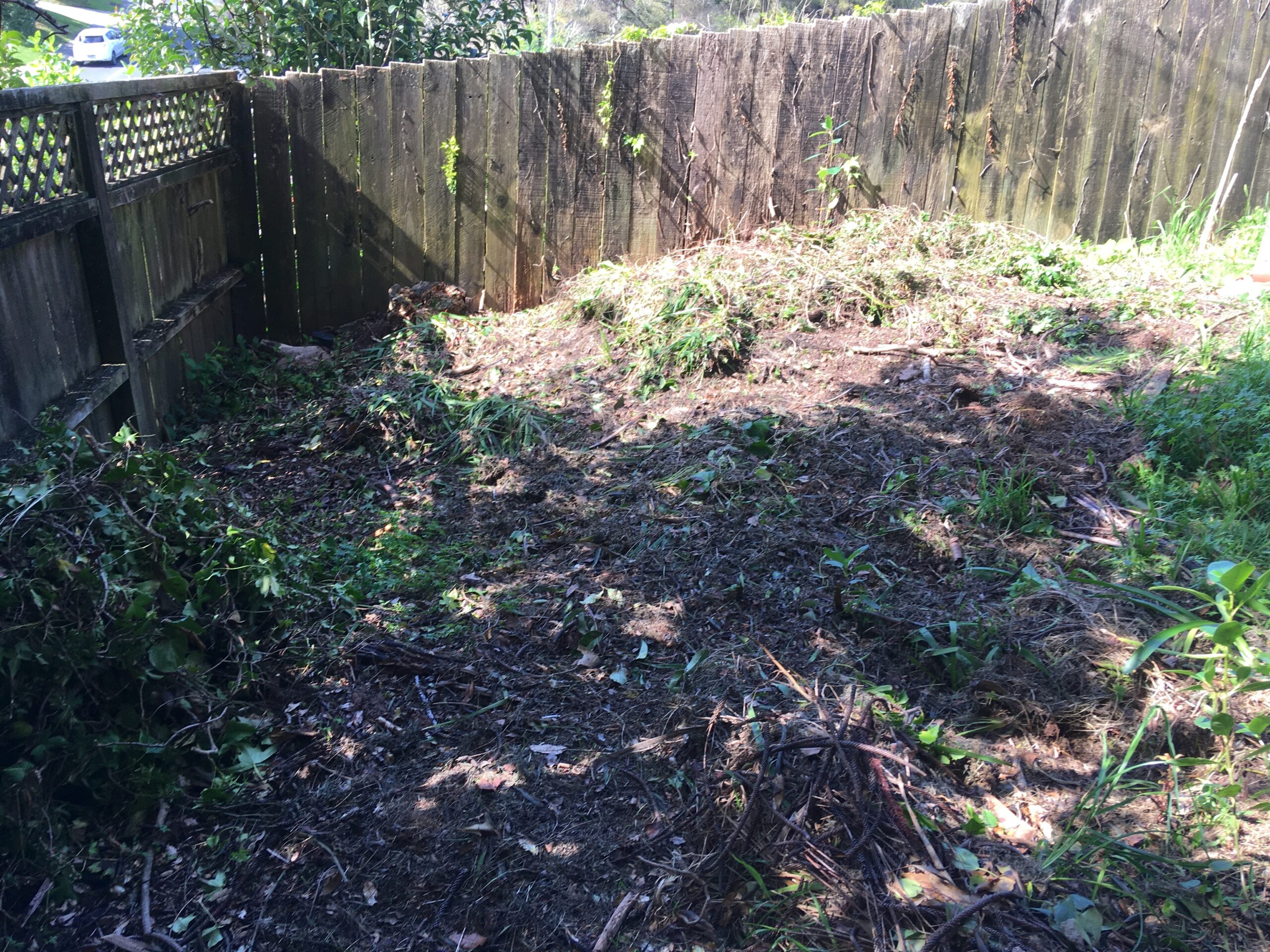
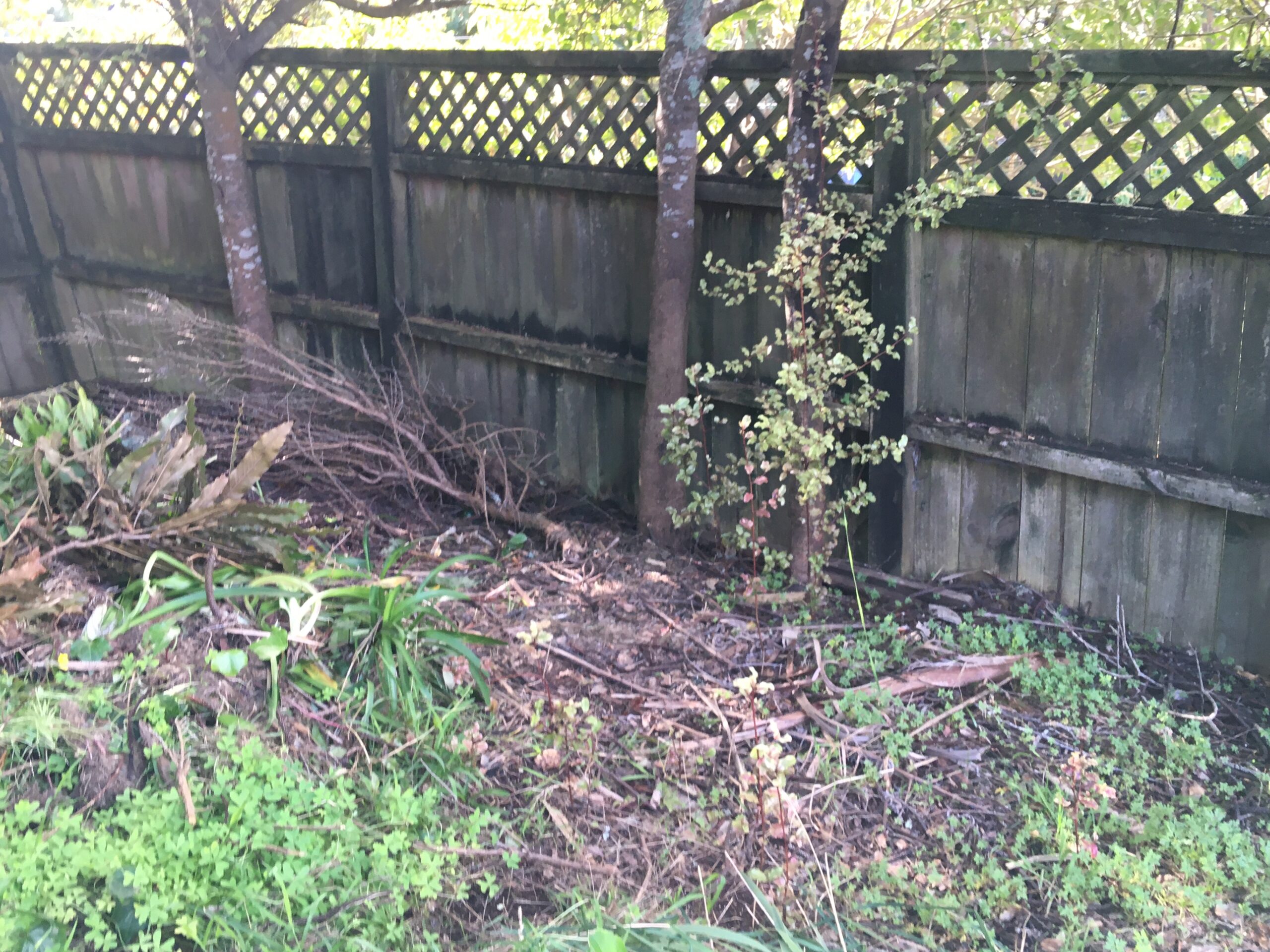
Hundreds of tree privet seedlings in the borders were easily uprooted while the ground was wet during winter, and larger ones, along with other tree weeds, were suppressed with a versatile pruning technique that leads to the weed-tree’s death over a year or two.
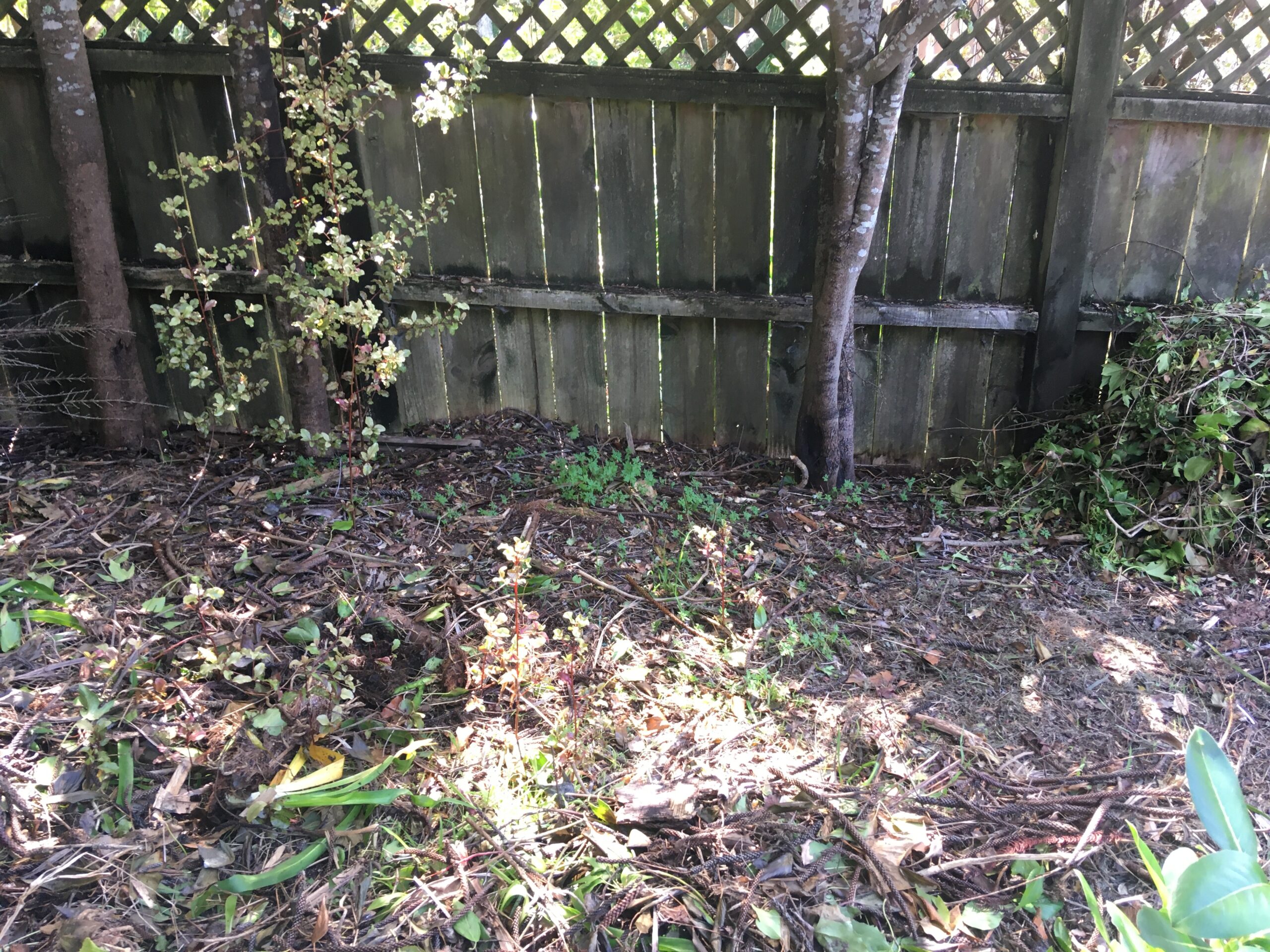
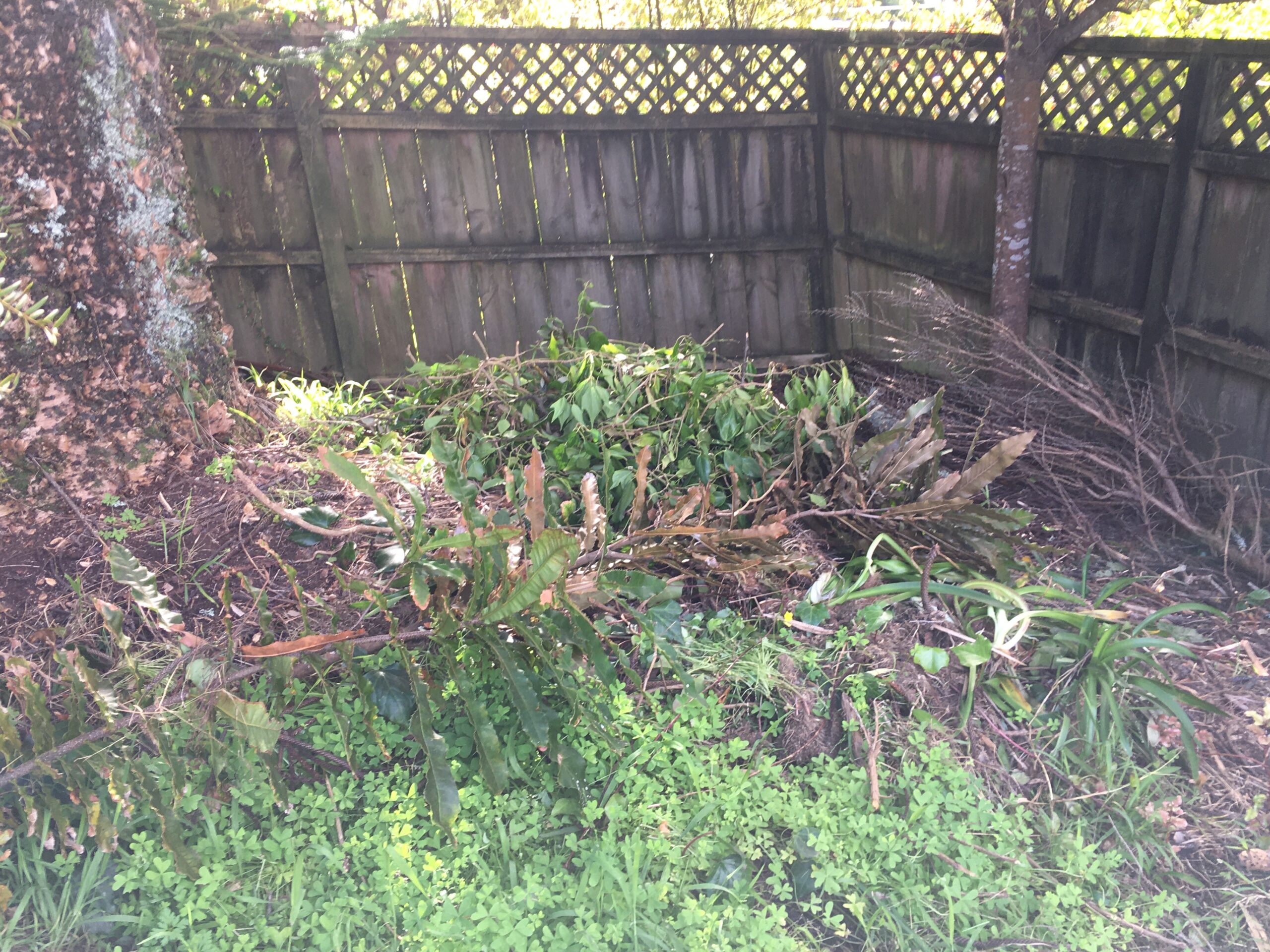
Many native tree seedlings had already arisen wild among the weeds, and were released over a month or so to provide the basis of the new bush garden. As is usually the case, karamu was the commonest wild native,
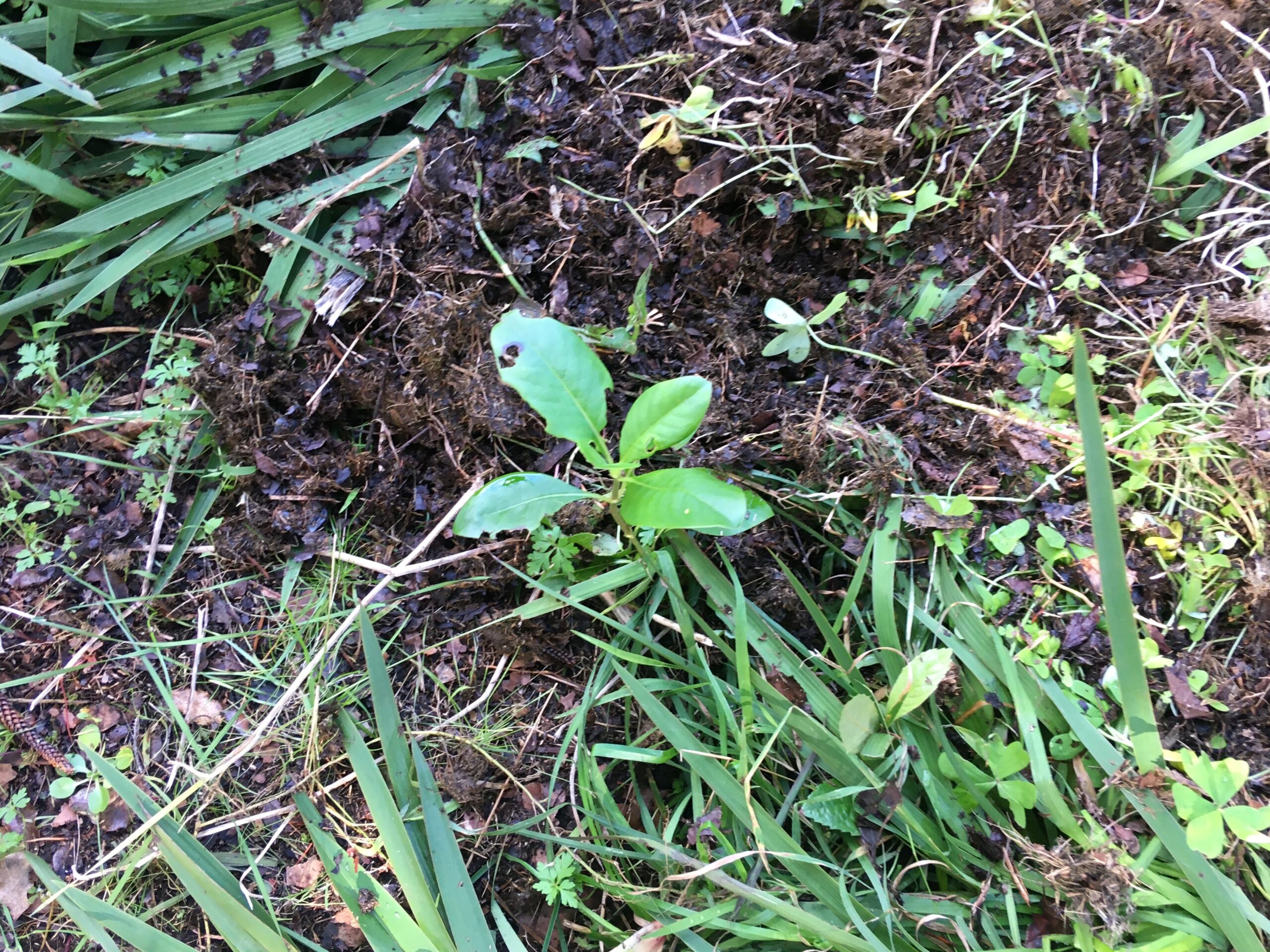
but as the hand weeding proceeded over the next few months we also discovered many wild mapou and houpara seedlings, and several rewarewa.
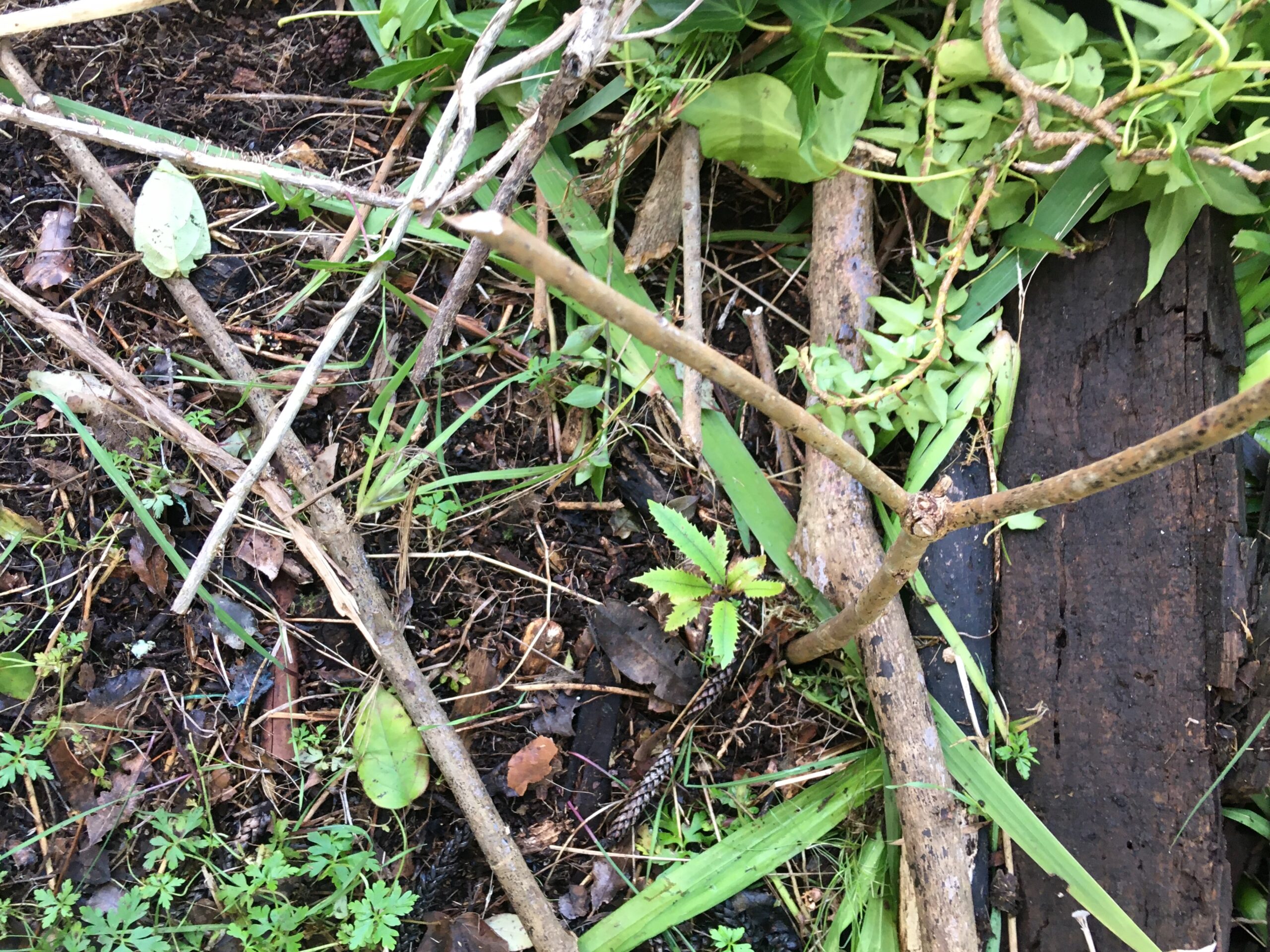
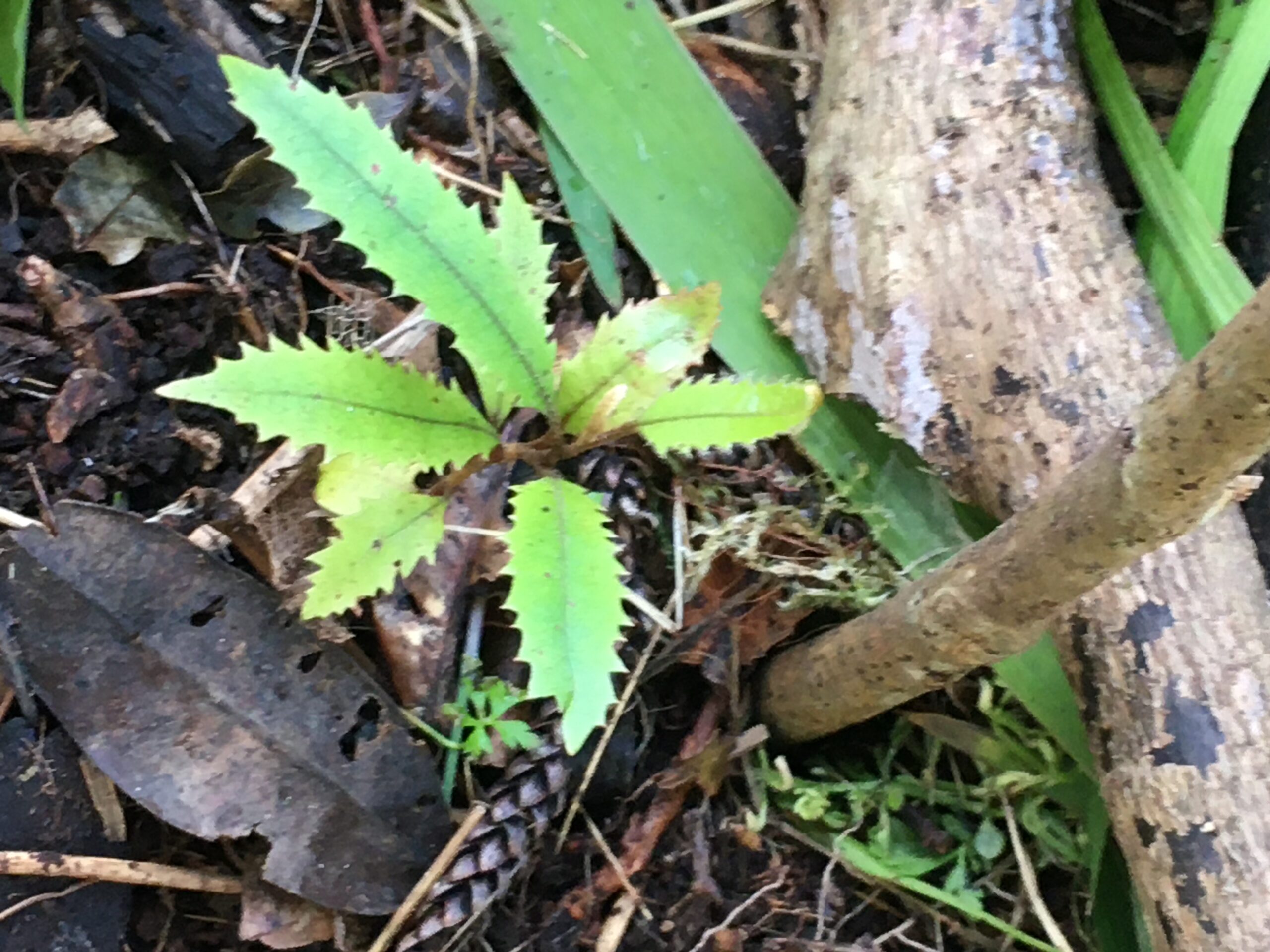
Today we were thrilled to find two wild seedlings of pigeonwood (porokaiwhiri, Hedycarea arborea).
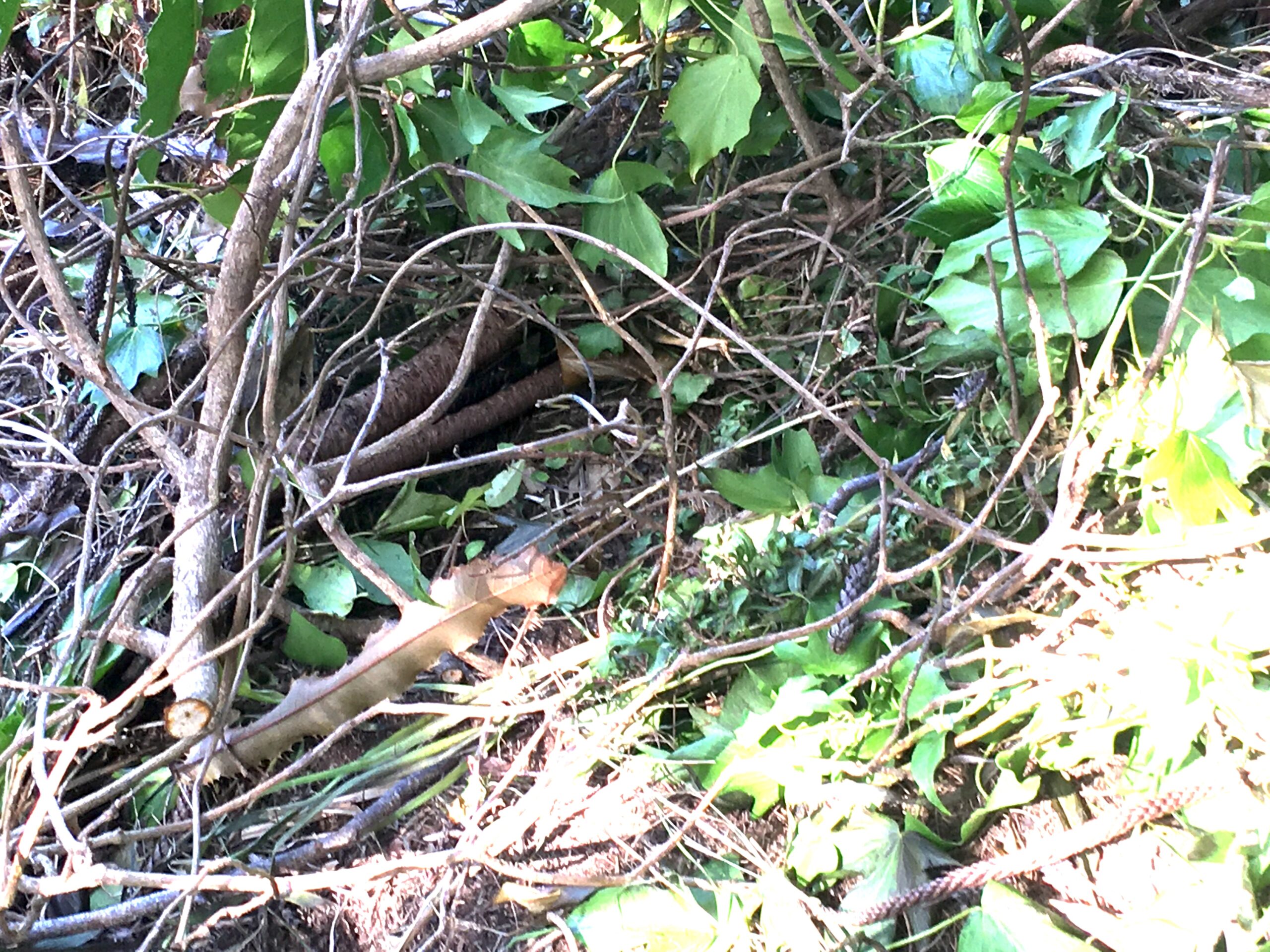
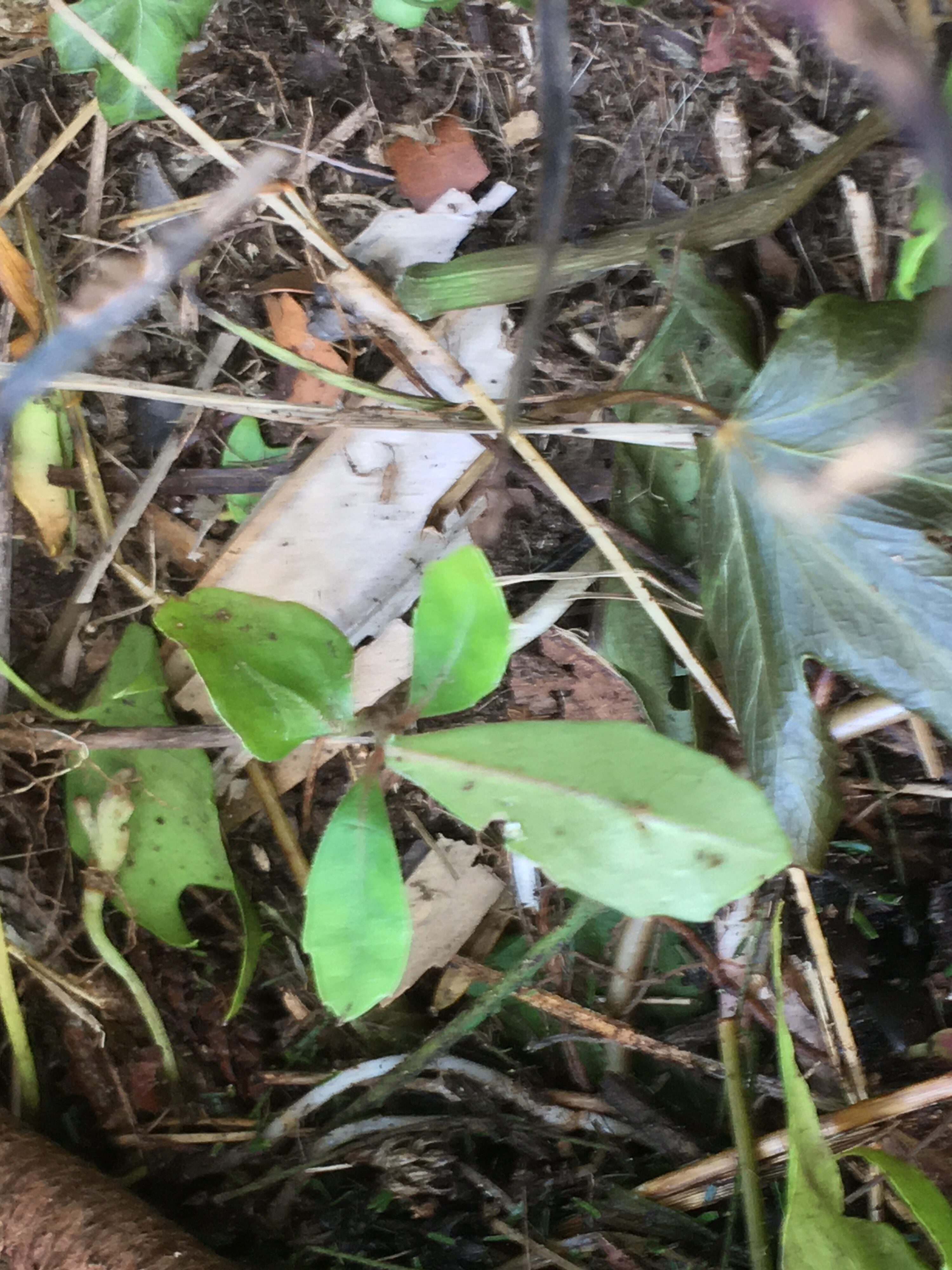
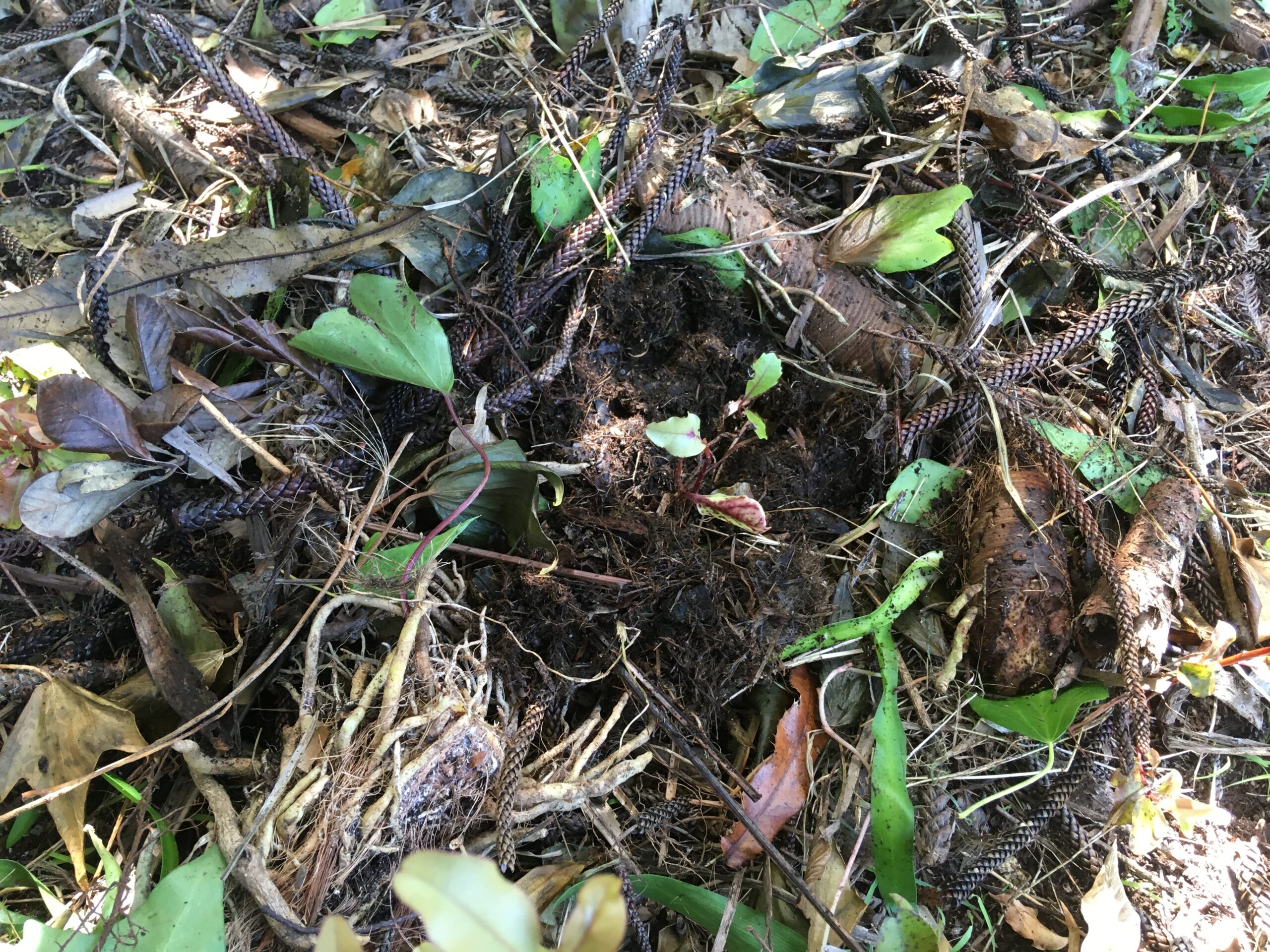
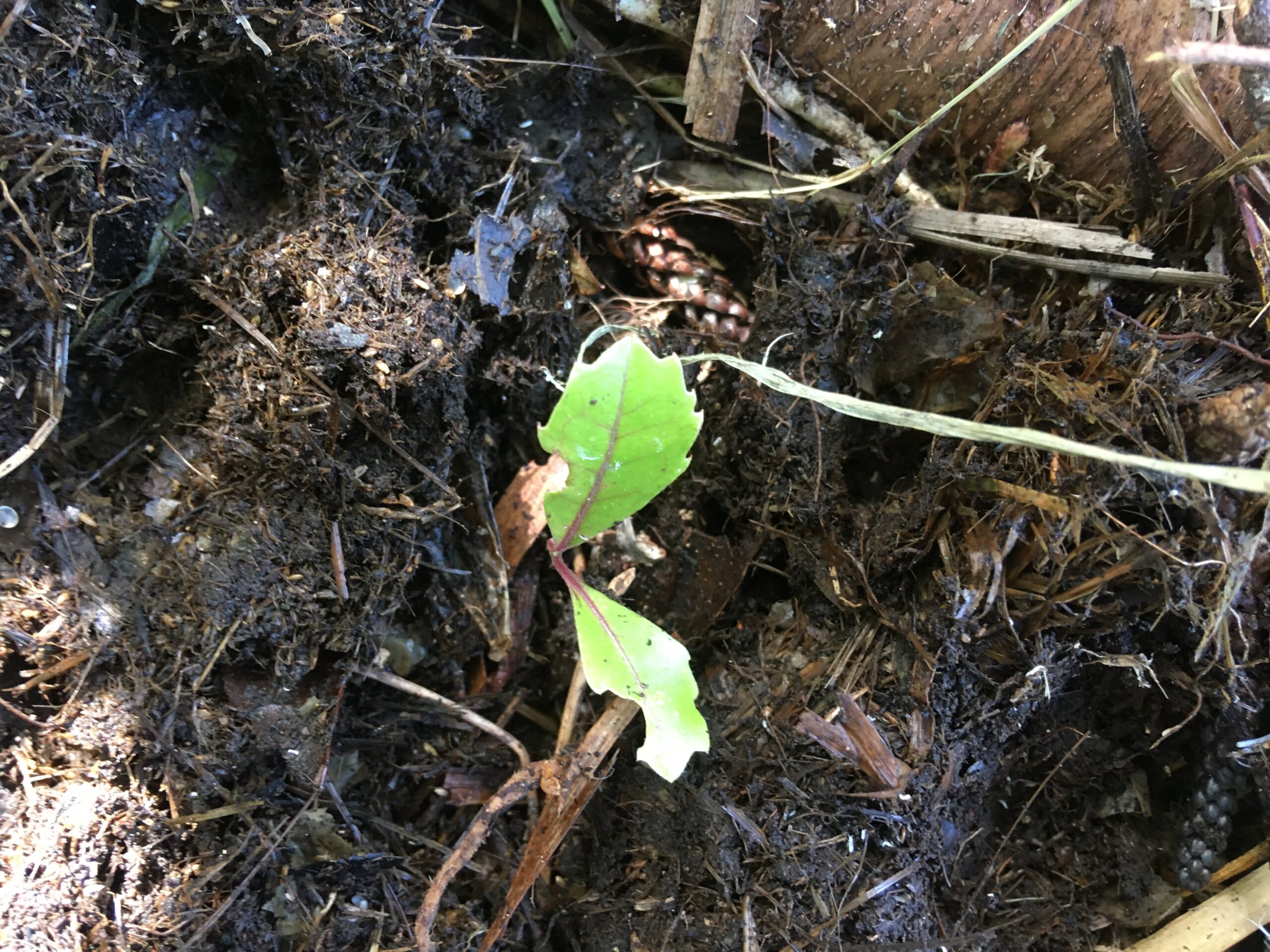
We have seldom seen pigeonwood outside of forest reserves. These seedlings have appeared in Michelle’s garden under a large Norfolk pine and young totara, with many species of trees and shrubs nearby, including those that attract birds that feed on berries.
There are no pigeonwood in this or neighbouring gardens, so a bird has fed on pigeonwood somewhere else, then come to Michelle’s garden to eat; perhaps the berries of native karamu, mapou or houpara (five-finger), or the exotic (and invasive) cotoneaster, ginger or Mexican fan or bangalow palms.
These two pigeonwood seedlings germinated among ground-covering weeds including Aristea ecklonii (Blue Corn lily), oxalis, ground-runners of ivy, kikuyu and Veldt grass. Fortunately we had suppressed most of these weeds a few months ago, leaving all the loose weed material as a thick mulch to rot those that did not uproot easily.
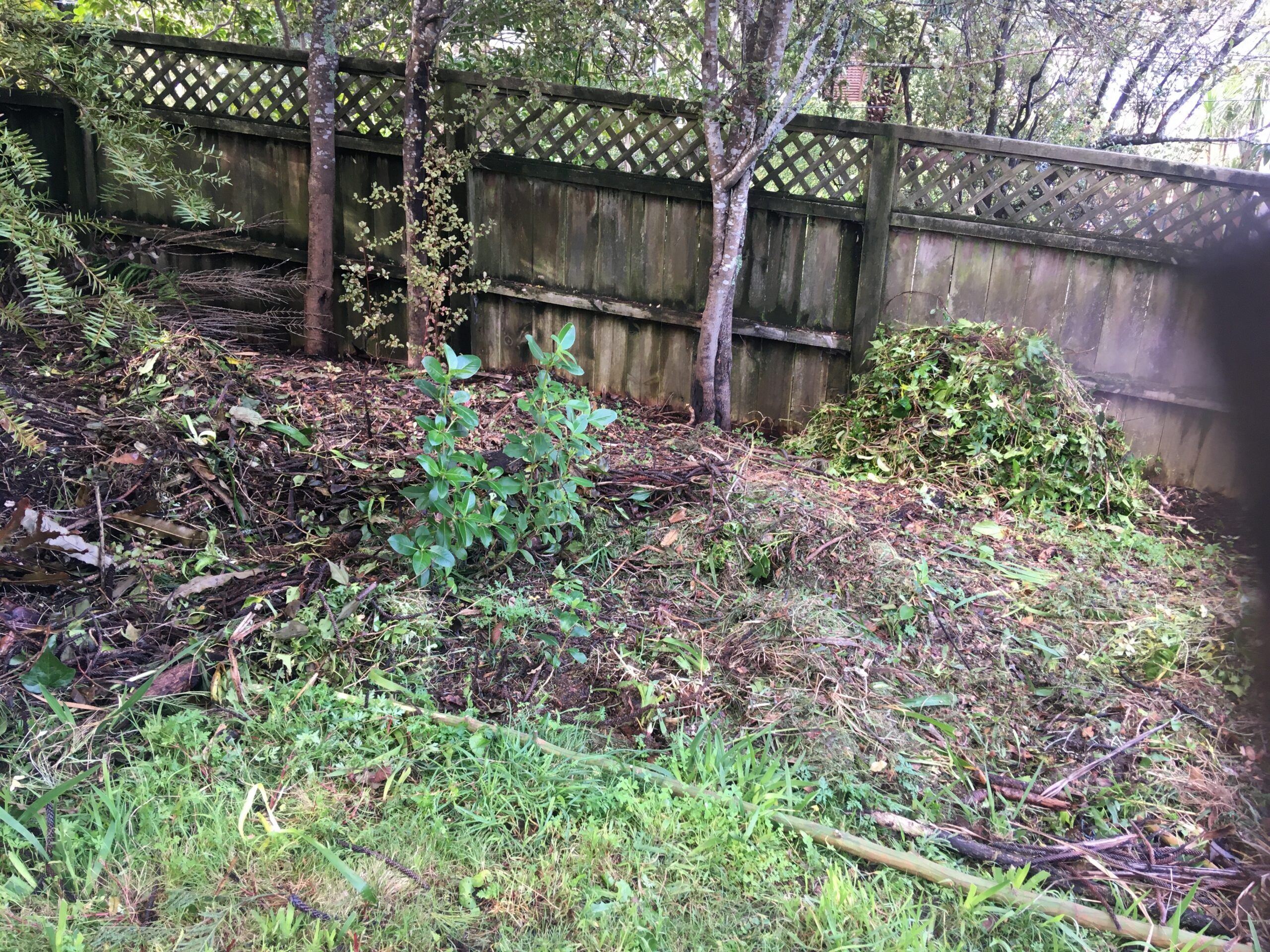
Today we were able to uproot most of the remainder of the weeds, and used the newly pulled weeds to mulch a little more of the lawn’s weedy edge. The soil after weeding is a lovely loose loam, full of composted weeds and lawn clippings, making a seed-bed that will support many more seedlings.
However, the soil surface is drying out fast now the prolonged rainy period is over, so we placed handfuls of weed-material around each of the native seedlings, and shaded small seedlings and bare soil (potential seedbeds) with the woody ivy branches which had been cut and piled over the last few months.
The leaves still hanging from the cut ivy branches provide a scattered partial shade, and the woody branches will keep their shape well into summer, providing a “tent-frame” over which other plant materials can be hung once the ivy leaves fall from their branches.
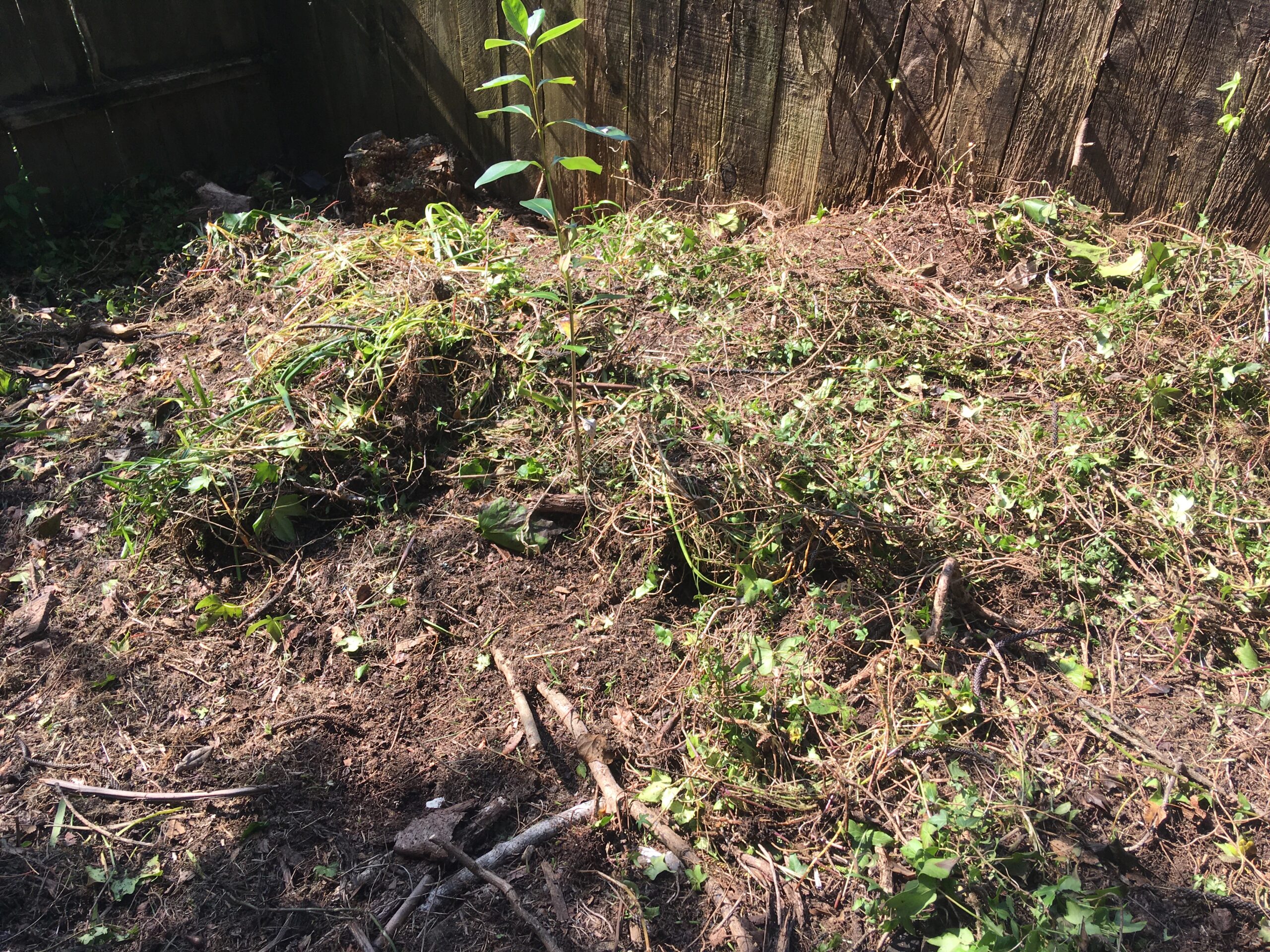
Not all seedlings survive, especially outside of the shade and protection of a compatible plant community. We hope to update you on the fate of these two pigeonwood seedlings in a future post.
Wikipedia has this to say about pigeonwood:
“Hedycarya arborea, commonly known as pigeonwood, porokaiwhiri, and poporokaiwhiri[1] is an endemic tree of New Zealand. Found on both the North and South islands of the country, the tree grows to a height of 15 metres. The leaves are oval shaped with shallow serrations. Ripe fruits turn red and the plant received its common name back when it was assumed that the New Zealand wood pigeon particularly favoured them, based on observations of the birds eating the fruit. It has since been discovered that the New Zealand wood pigeon does not prefer these berries, and tends to eat them as a ‘famine food’ when better fare is not available”.
